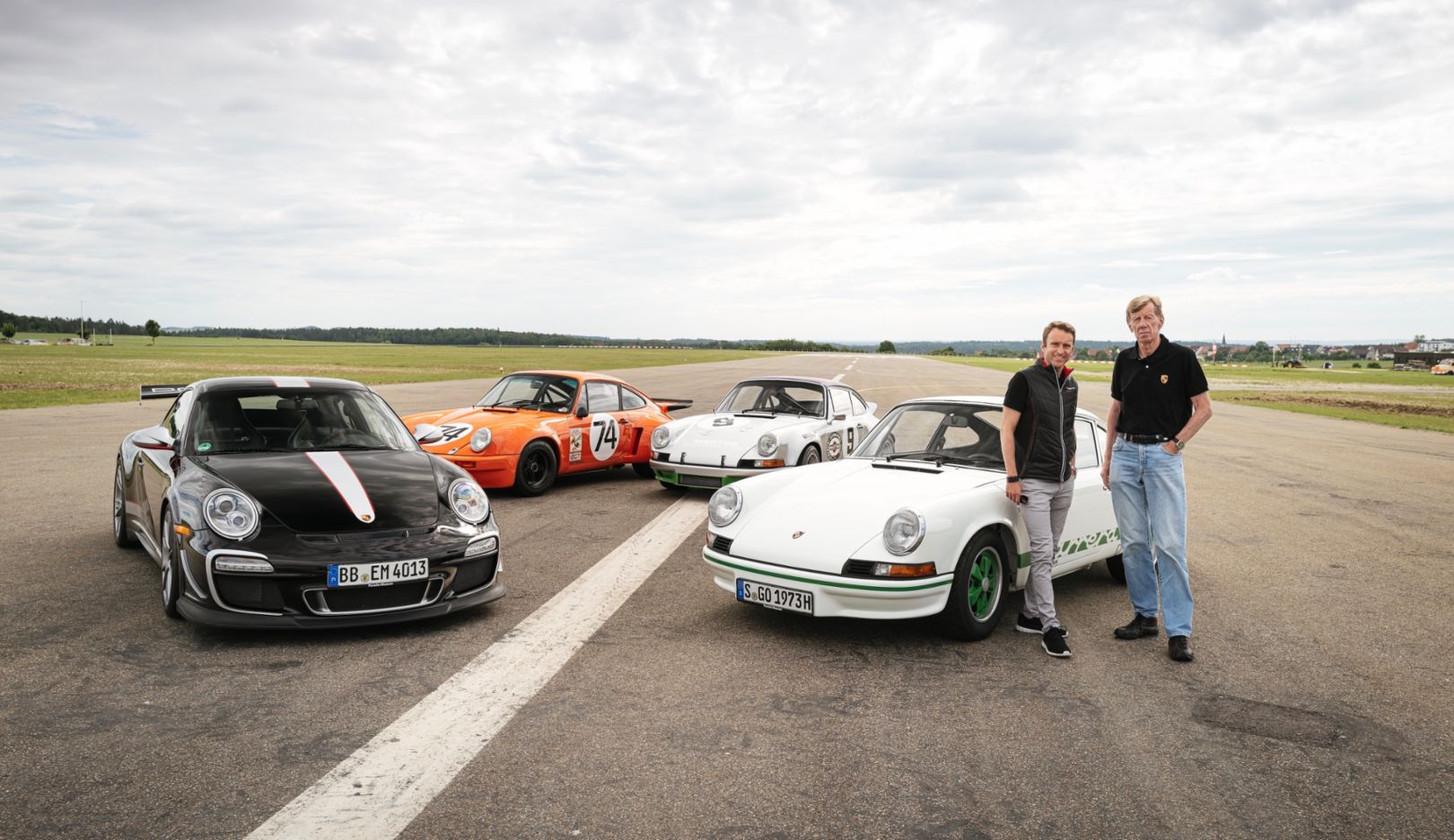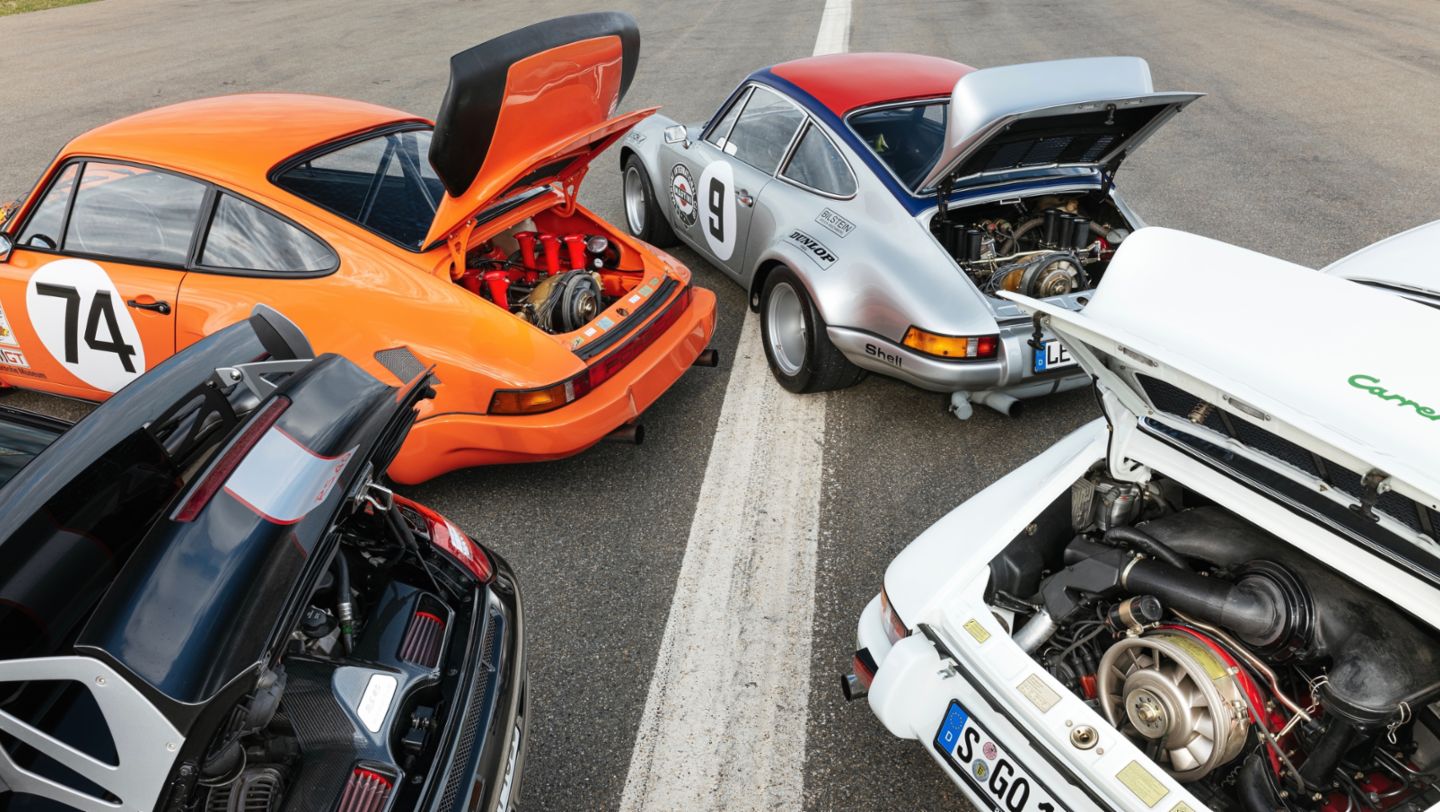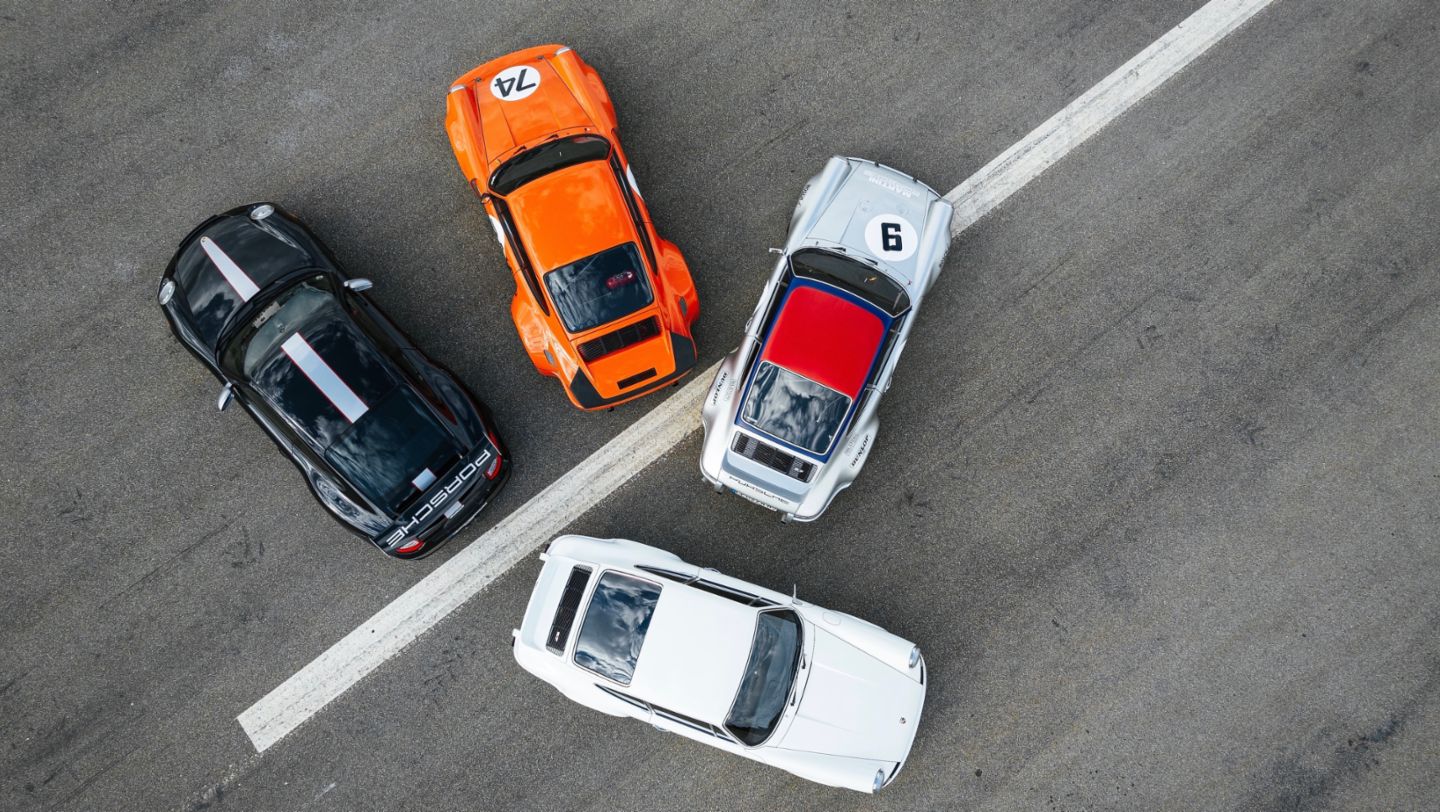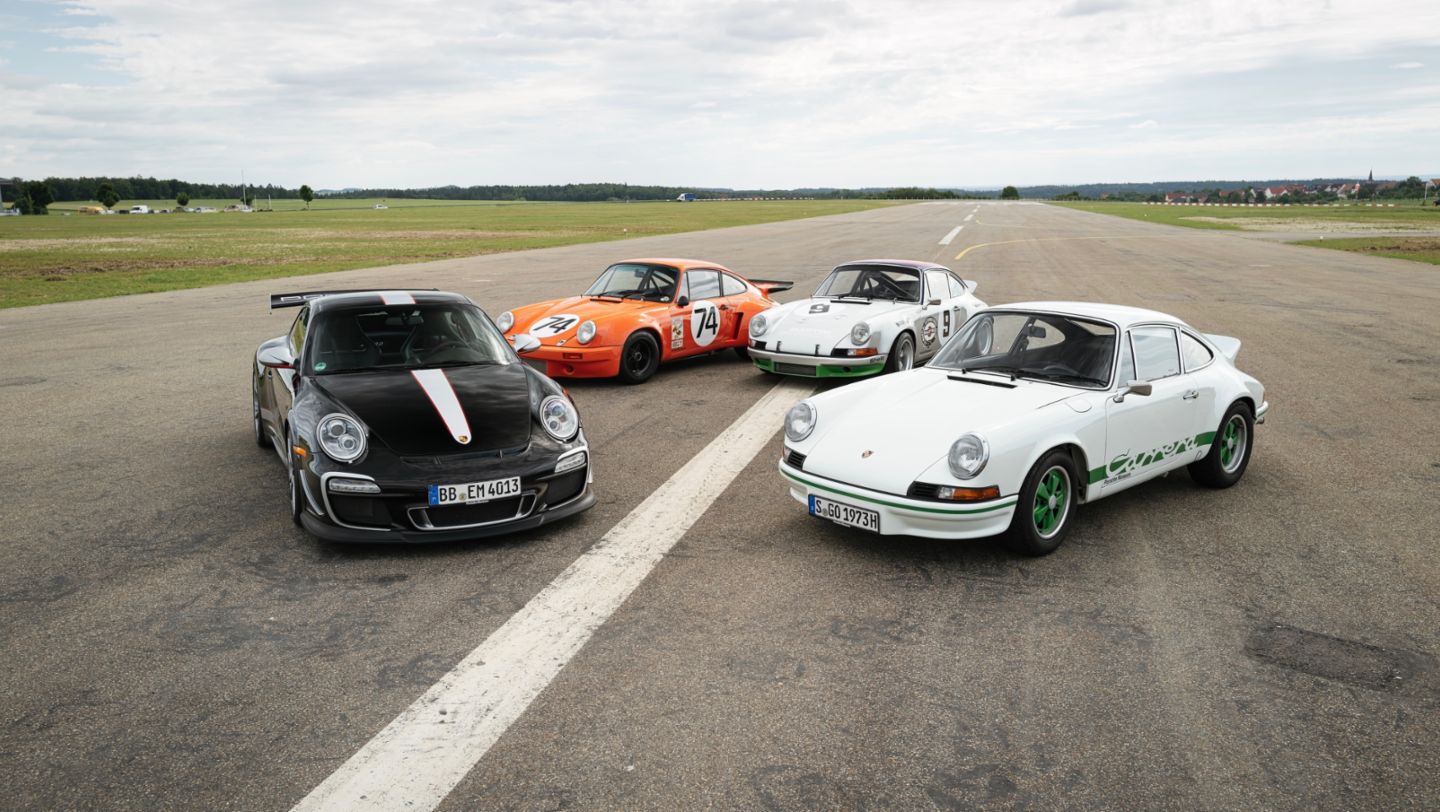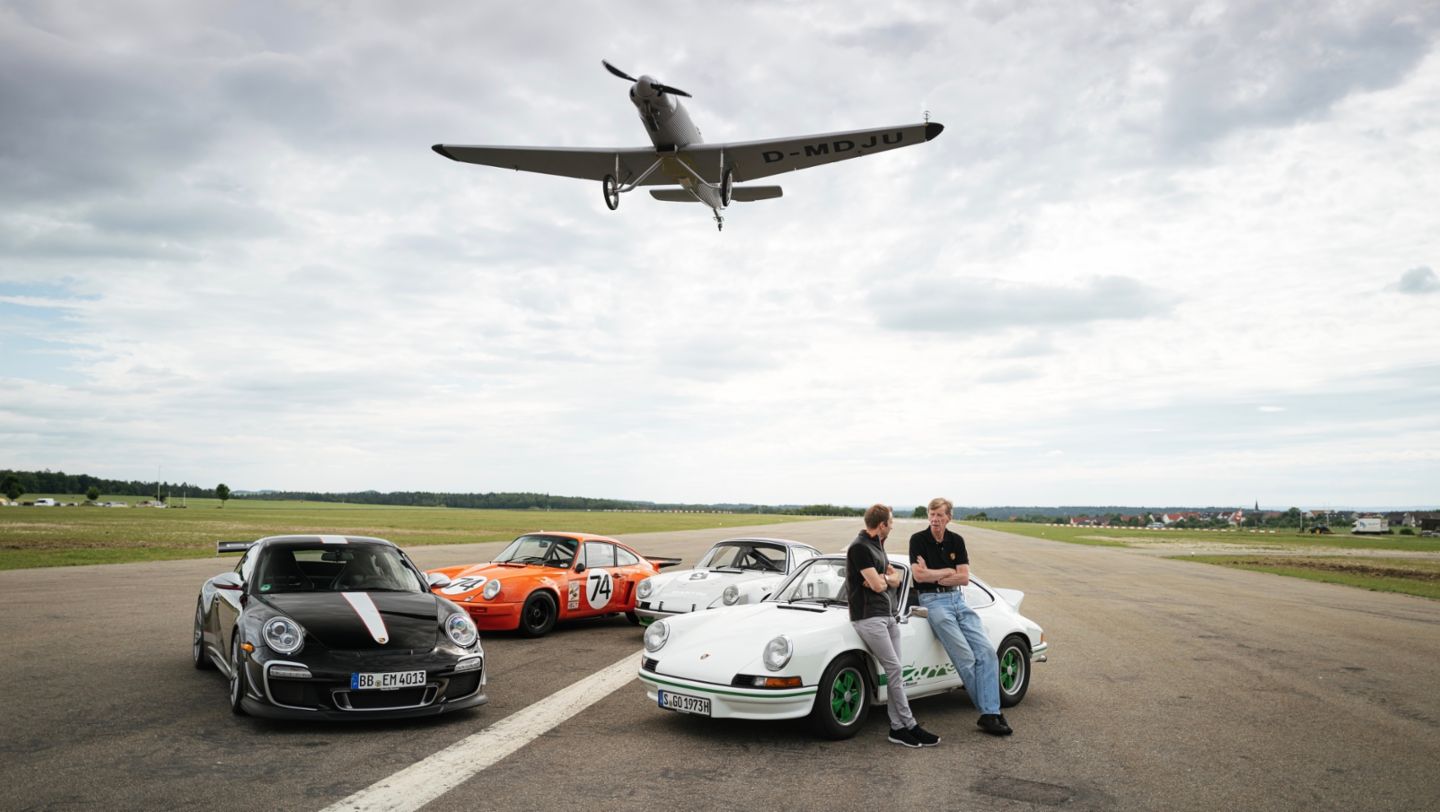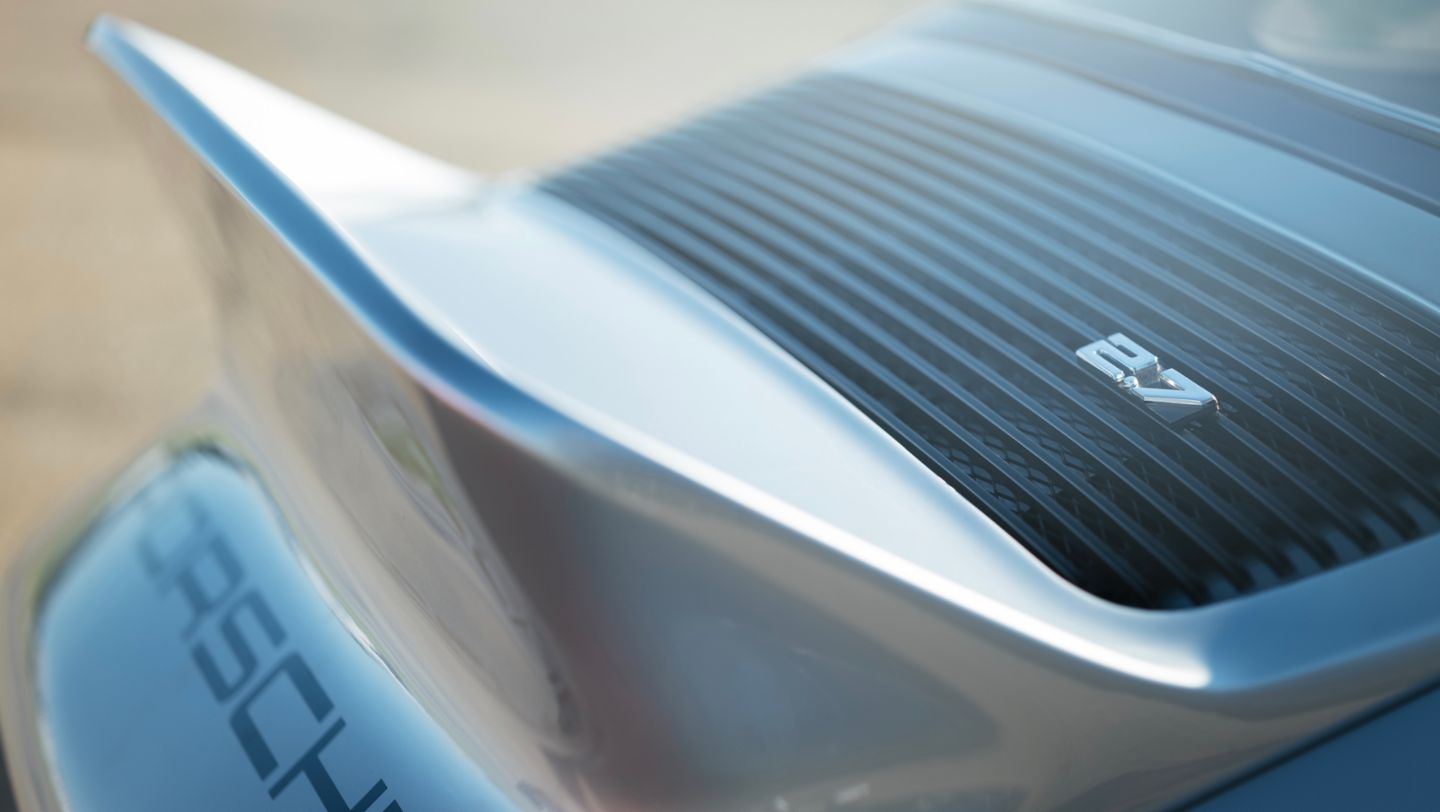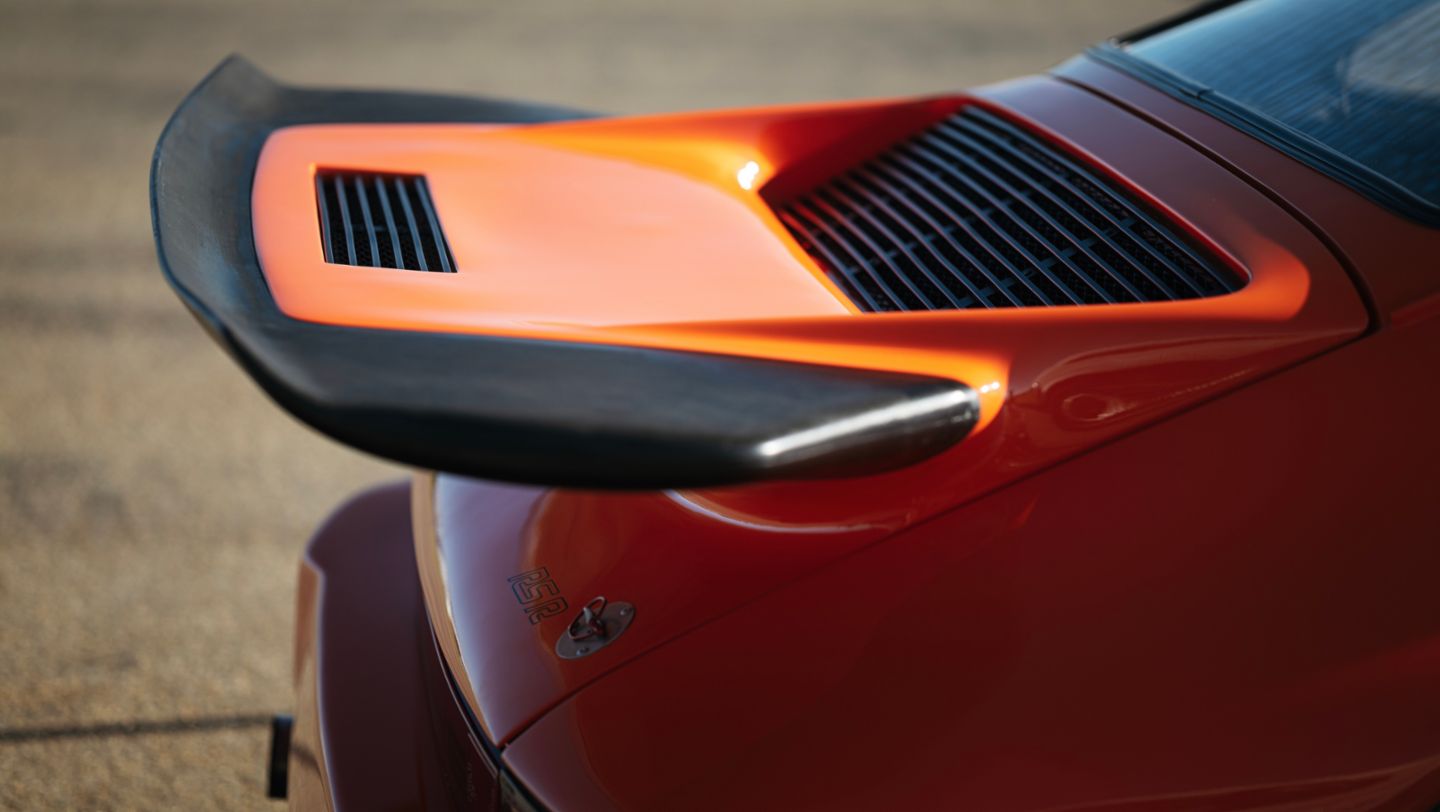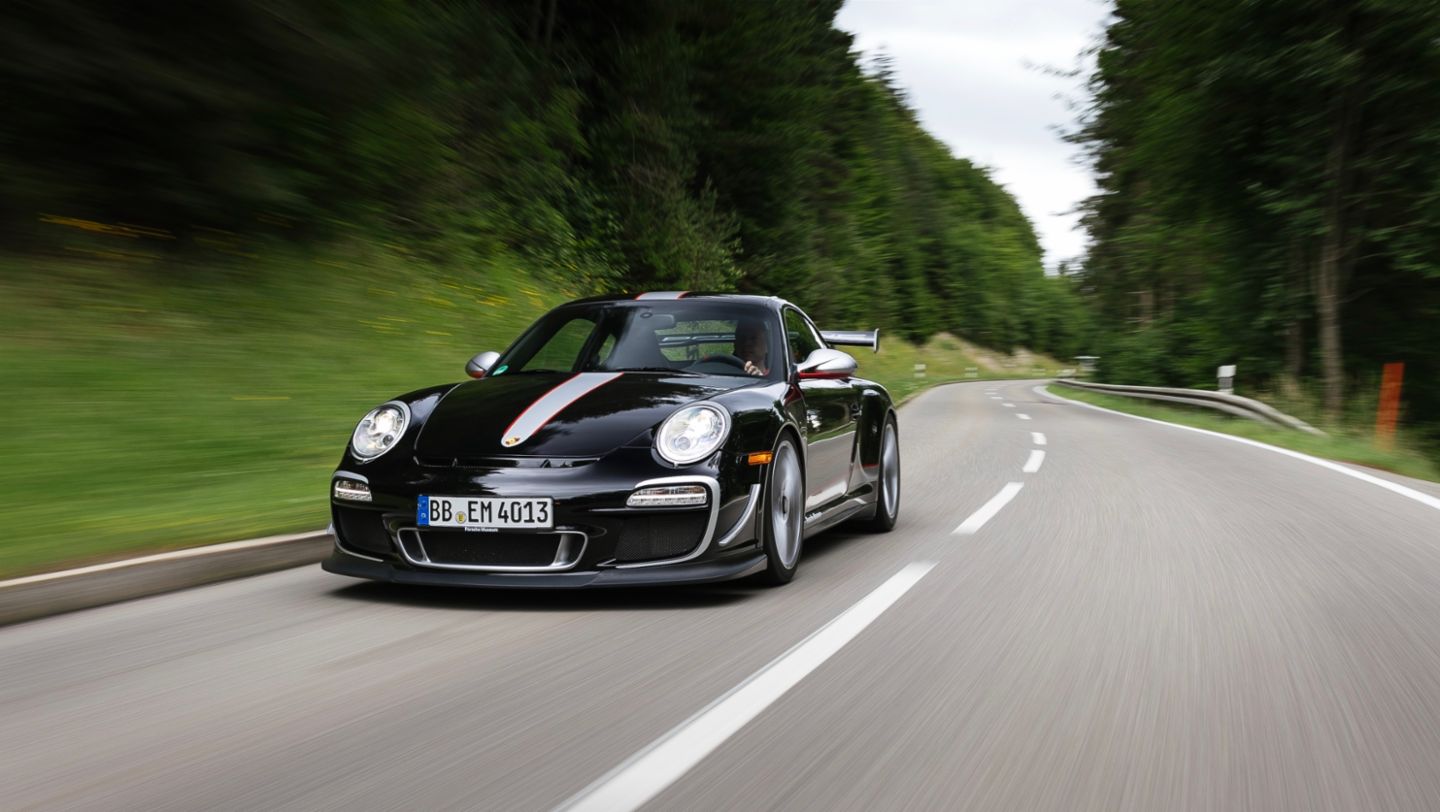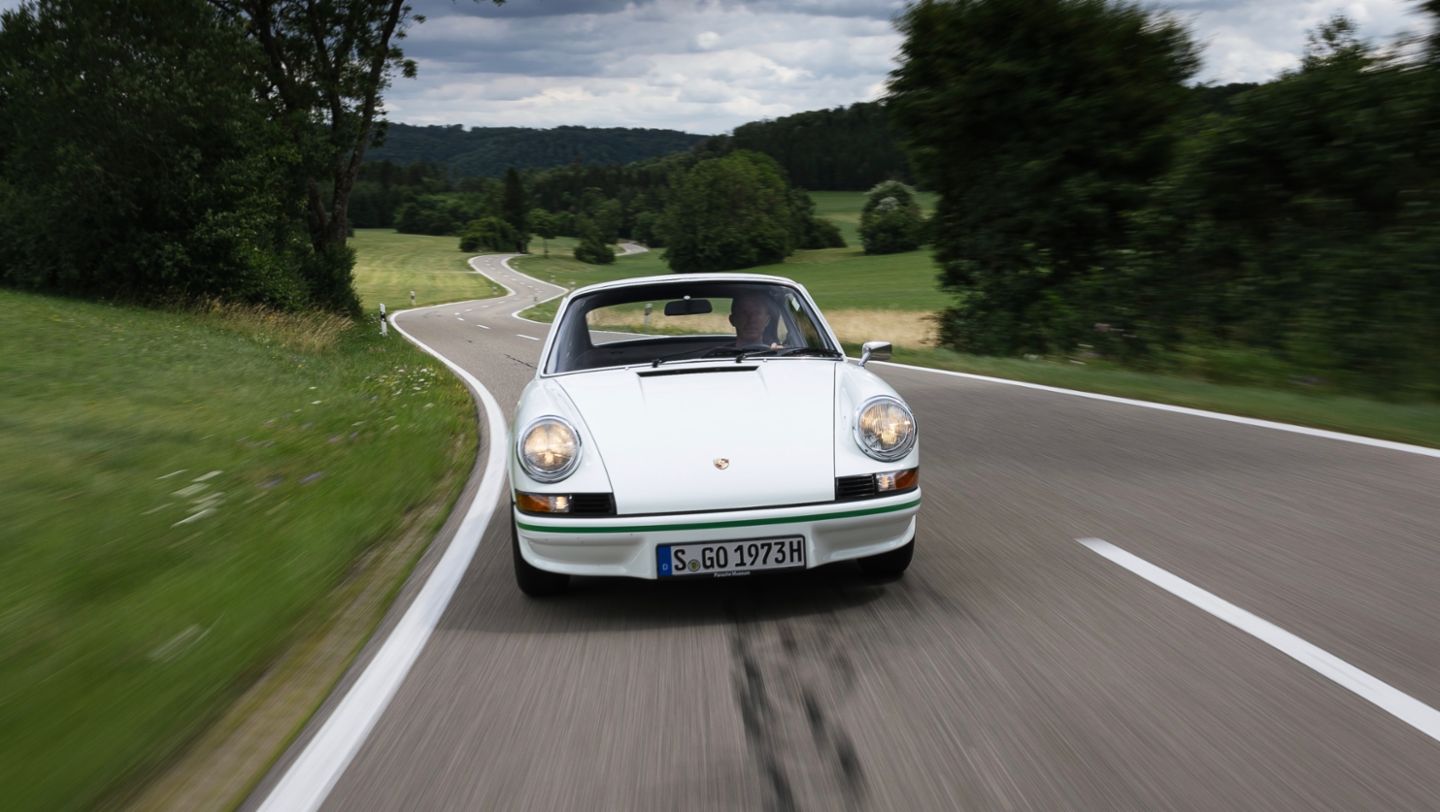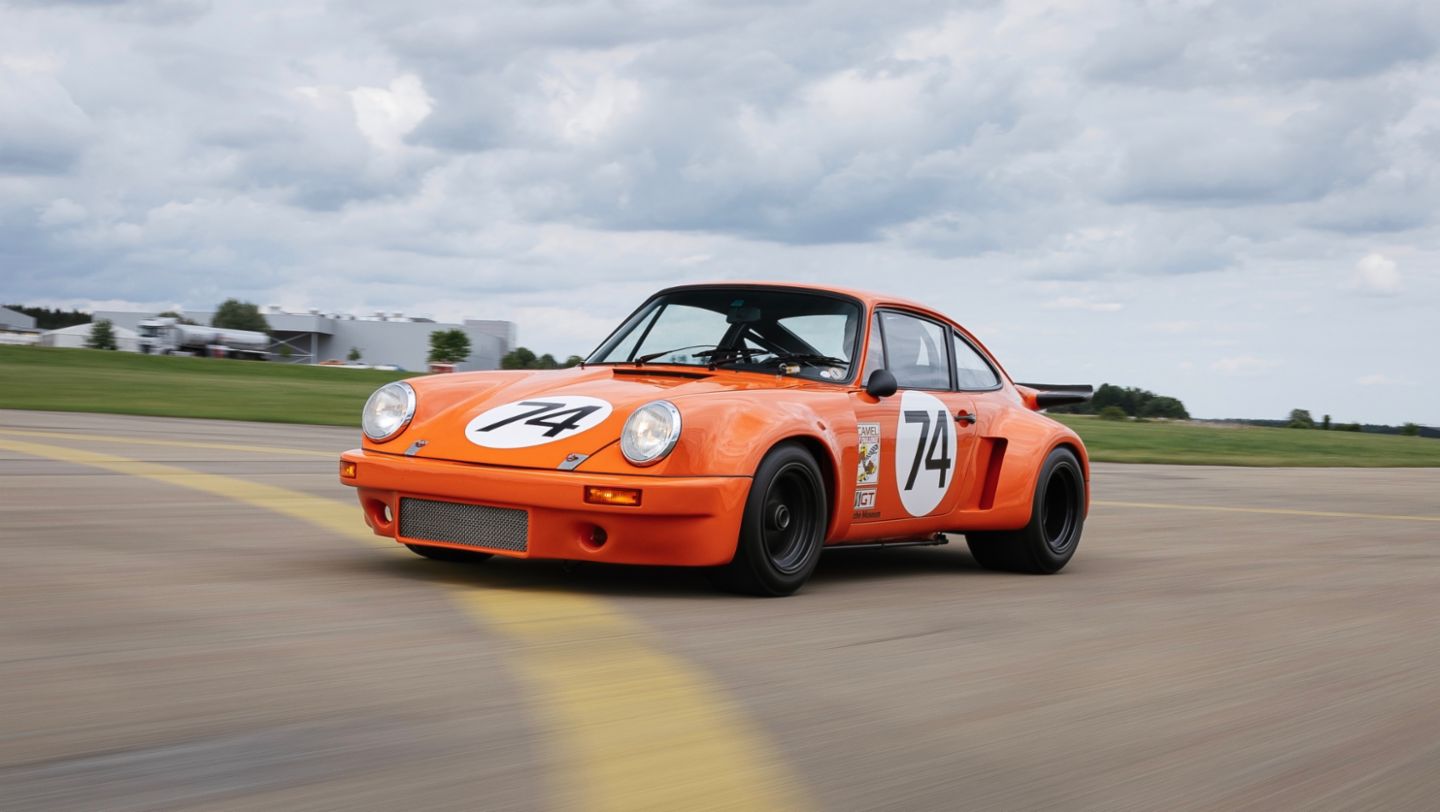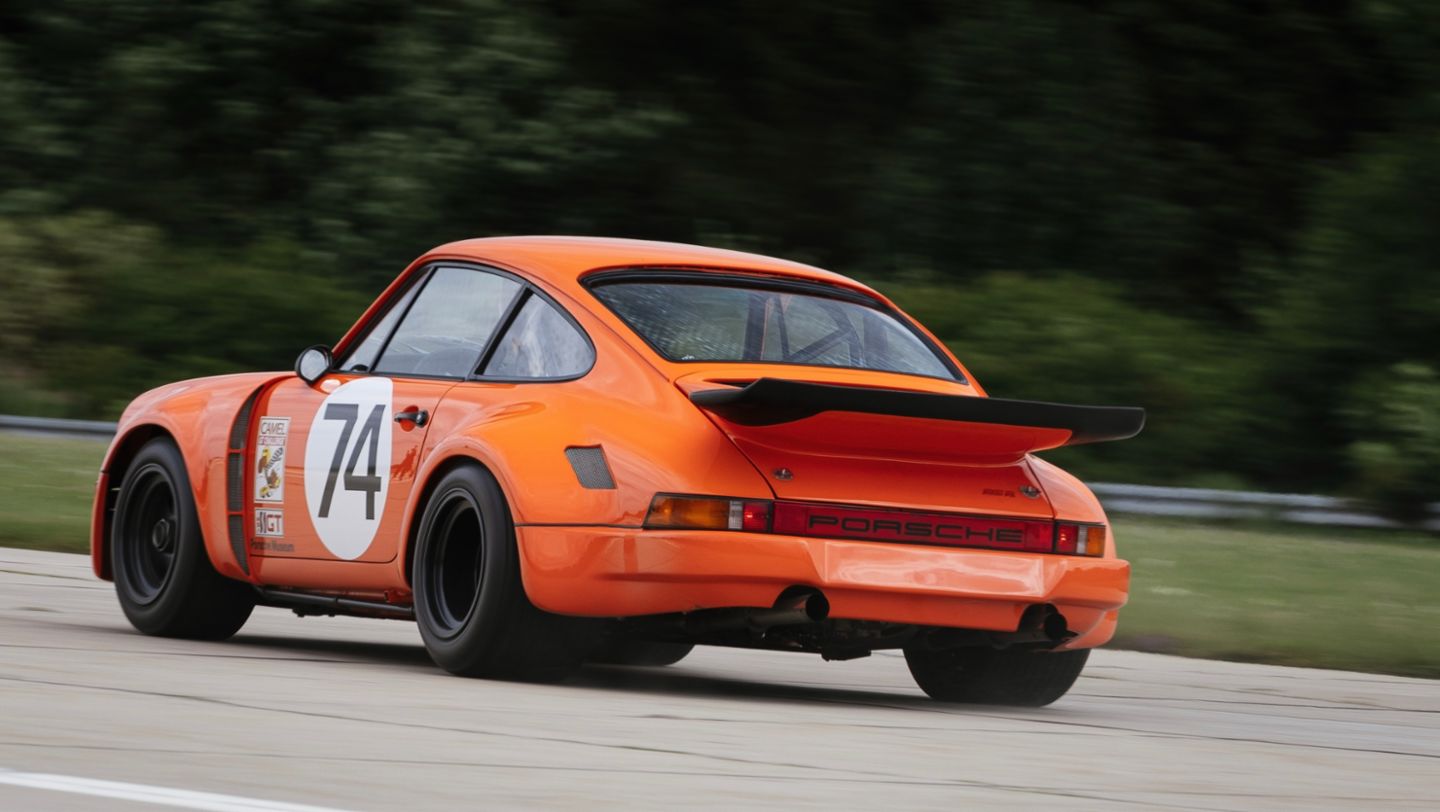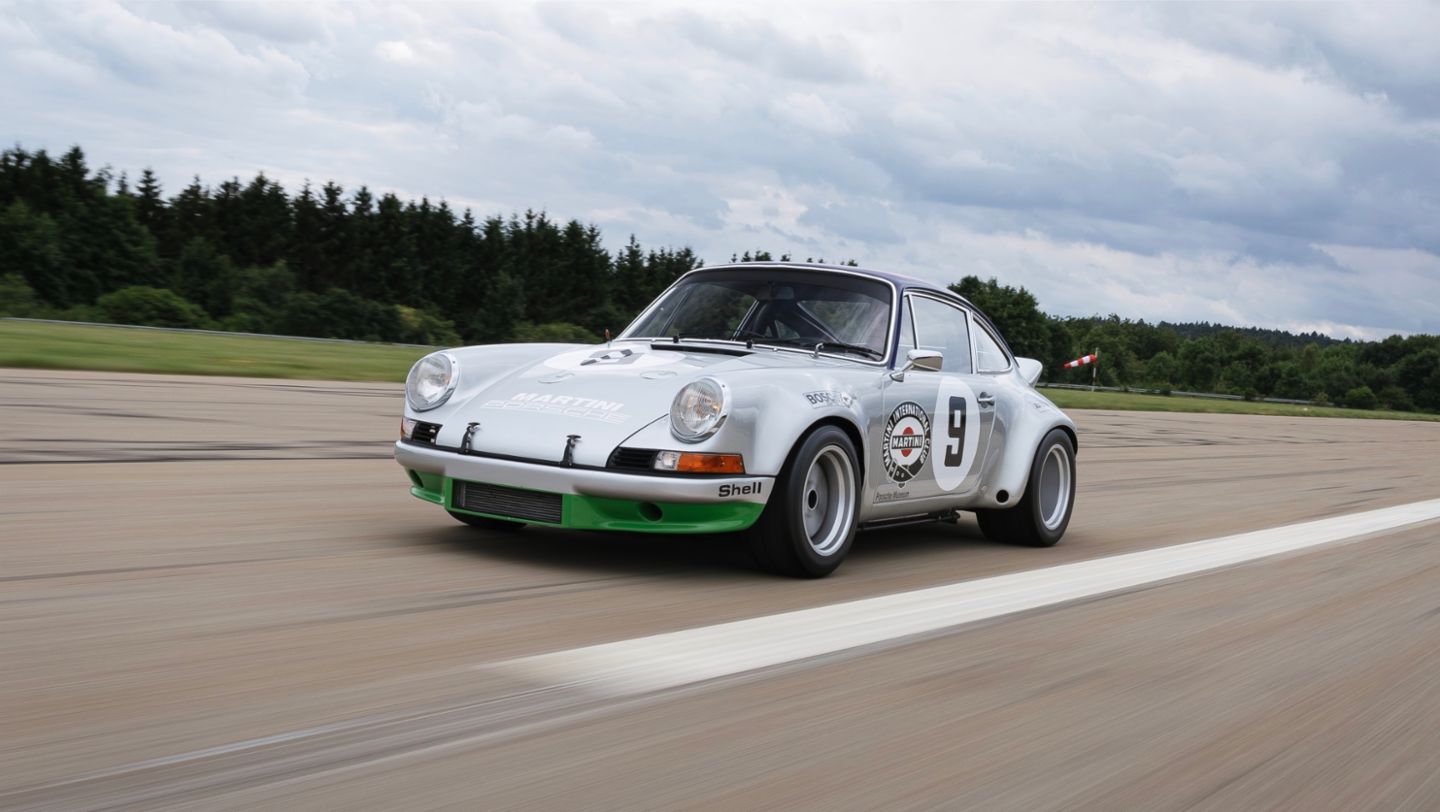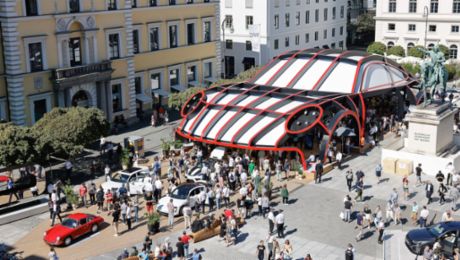“This was my dream car when I was young. I’m proud to be able to drive a car like this today,” says Röhrl, sitting at the wheel of the icon. When the 911 Carrera RS 2.7 was unveiled at the Paris Motor Show on 5 October 1972, it represented both the pinnacle, and the final iteration, of the first-generation 911. Porsche presented the coupé to the public as its new 911 base vehicle for racing and rallying. “What set you apart wasn’t just your incredible success in rallying, but your great versatility on the track,” says Bernhard as he takes his place in the passenger seat beside the 75-year-old. “I see parallels between the car and you.” It’s time to go on a short drive.
“All its innovations meant that the 2.7 was considered a pioneer for the entire automotive industry,” Röhrl explains. It was the first production sports car to have both a front and rear spoiler. The component that became known as the ducktail enabled lower drag and a 4.5 km/h increase in top speed.
Röhrl and Bernhard continue their journey back through time, rhapsodising about the legend that is the RS and the impact of motorsport on the series production cars made by Porsche. After a while they switch to a more recent era – and into a 2011 Porsche 911 GT3 RS 4.0. The 500 PS sports car is a descendent of the 2.7 and a “wonderful car with perfectly implemented aerodynamic precision,” says Röhrl, waxing lyrical while Bernhard takes the wheel. “With the 4.0, Porsche ensured that the legend endured, even elevating it to new heights,” 41-year-old Bernhard concludes.
This race-ready Porsche with four litres of displacement was the pinnacle of achievement that also brought the 997 generation to a close – as the last car with a Mezger engine. Two further cars await the two gentlemen, in order to make their journey back in time complete: the 911 Carrera RSR 2.8 racing version from 1973, the forefather of all RSR models, and its RSR 3.0 successor with its increased displacement, the last and most powerful development stage in the RS series. “Two cars that drove to countless victories and represent cornerstones of the Porsche legend,” says Röhrl as he challenges the Saarland native to a short race on a piece of cordoned-off land.
Info
From 20 September 2022 onwards, the Porsche Museum is holding a special exhibition – ‘Spirit of Carrera RS’ – to mark the 50th anniversary of the 911 Carrera RS 2.7.
